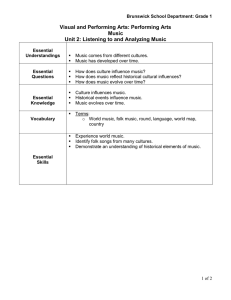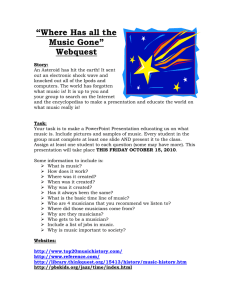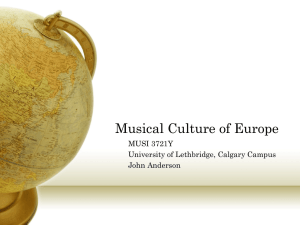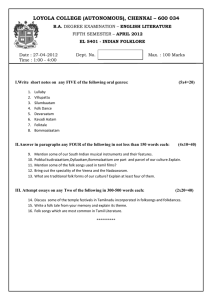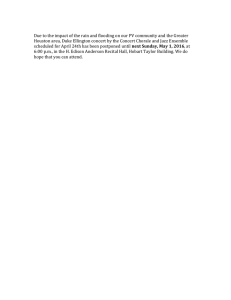Visual and Performing Arts: Performing Arts Music Unit 1: Folk Music
advertisement
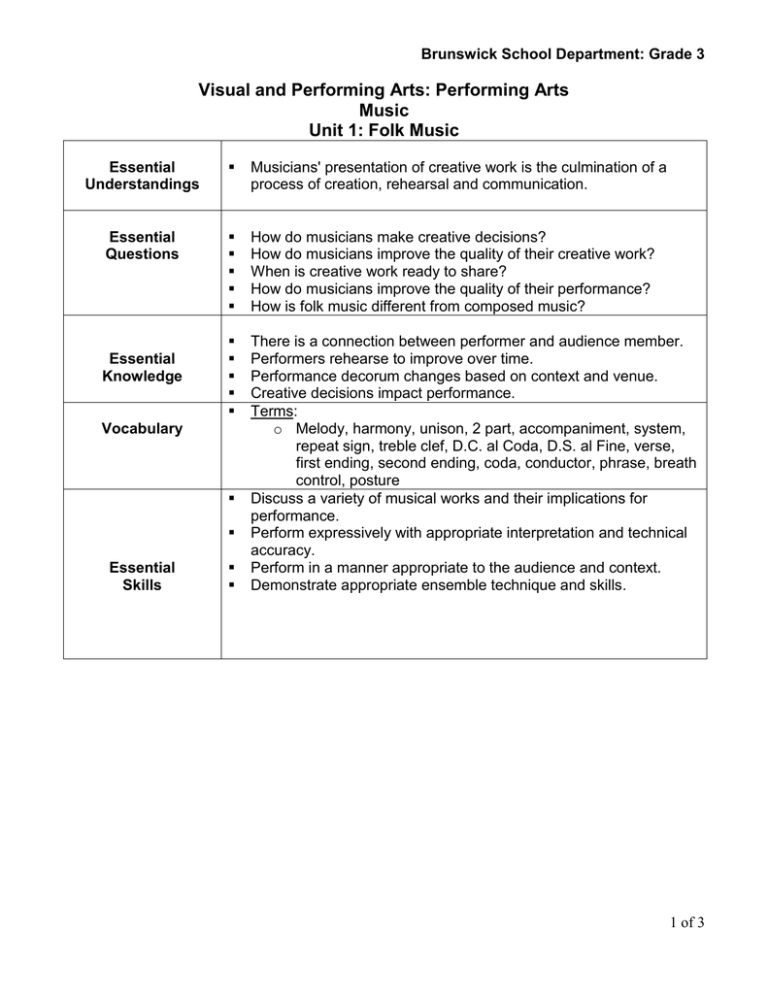
Brunswick School Department: Grade 3 Visual and Performing Arts: Performing Arts Music Unit 1: Folk Music Essential Understandings Musicians' presentation of creative work is the culmination of a process of creation, rehearsal and communication. Essential Questions How do musicians make creative decisions? How do musicians improve the quality of their creative work? When is creative work ready to share? How do musicians improve the quality of their performance? How is folk music different from composed music? There is a connection between performer and audience member. Performers rehearse to improve over time. Performance decorum changes based on context and venue. Creative decisions impact performance. Terms: o Melody, harmony, unison, 2 part, accompaniment, system, repeat sign, treble clef, D.C. al Coda, D.S. al Fine, verse, first ending, second ending, coda, conductor, phrase, breath control, posture Discuss a variety of musical works and their implications for performance. Perform expressively with appropriate interpretation and technical accuracy. Perform in a manner appropriate to the audience and context. Demonstrate appropriate ensemble technique and skills. Essential Knowledge Vocabulary Essential Skills 1 of 3 Brunswick School Department: Grade 3 Visual and Performing Arts: Performing Arts Music Unit 1: Folk Music Standards: Maine Learning Results Standards And Common Core A.1. Students accurately perform music in easy keys, meters, and rhythms with limited ranges, both instrumentally and vocally, while modeling proper posture and technique, alone or with others. A.2. Students identify and read musical notation, symbols, and terminology of dynamics. a. Read whole, half, dotted half, quarter, and eighth notes and rests in 2/4, 3/4, and 4/4 meter signatures. b. Identify symbols and traditional terms referring to dynamics, tempo, and articulation. D.1. Students describe and compare art forms. a. Describe and compare art forms by applying grade span appropriate arts concepts, terminology, skills, and processes as referenced in Standard A: Disciplinary Literacy. b. Ask questions about an art form to further understand the concepts, skills, and processes used to create/perform the work of art. c. Explain purposes for making art in different times and places, including cultural traditions, personal expression, and communication of beliefs. E.1. Students explain that the visual/performing arts help people understand history and/or world cultures. E.5. Students identify positive interpersonal skills that impact the quality of their art and participation in the arts. a. Getting along with others b. Respecting differences c. Working as a team/ensemble d. Managing conflict e. Accepting/giving/using constructive feedback f. Accepting responsibility for personal behavior g. Demonstrating ethical behavior h. Following established rules/etiquette for observing/listening to art i. Demonstrating safe behavior 2 of 3 Brunswick School Department: Grade 3 Visual and Performing Arts: Performing Arts Music Unit 1: Folk Music Sample Classroom Assessment Methods Sample Resources Observation Work samples Concert performance Other Resources: o A variety of sheet music o Sound system o iPod o Supported time and space for ensemble development/dress rehearsal o Concert venue 3 of 3
